Jean Schulz’s never-ending curiosity, active philanthropy and overseeing of an esteemed Sonoma County landmark characterizes her varied and fascinating life. Widow of the beloved “Peanuts” cartoonist Charles M. “Sparky” Schulz, Jean Schulz had the vision for the Charles M. Schulz Museum & Research Center and has been president of the board since its opening 20 years ago. She has played a vital role as custodian of both the legacies of her husband and work. Amid her busy schedule, Schulz spoke with The Oak Leaf about this role and her life inside and outside of Santa Rosa’s borders.
This interview has been edited for the sake of clarity and conciseness.
The Oak Leaf: The 20th anniversary of the museum is this year. What was your original vision?
Jean Schulz: It has to be homey and have a space for [Sparky’s] original art. I didn’t understand that, a museum where everybody [has seen] all the [“Peanuts” comic] strips. But other people said, “No, that’s the wrong way to look at it.” People want to see the original art, and they don’t know all the background. So that’s what you put in the museum. Our whole thing was we wanted it to be comfortable, we wanted it to be welcoming. We want to do what Sparky would do, which was if the museum opened at 10 [a.m.] and there were people standing outside who wanted to come in, let them in [early]. We tried to keep it in Sparky’s spirit.
OL: What role do you think the museum has established within the community?
JS: I think it’s still to explain; it’s to entertain people, if you will. I don’t like to say “educate” them, but it is, as much as they want to be educated. I think it contributes to the community because people come from literally three-quarters of the world and every state [to visit]. And we have classes and cartoonists who come and speak on Saturdays. When can you go sit next to somebody who’s drawing for two hours and hear what they say to others and ask them questions? If you go to a signing, maybe you get a couple minutes and you’re embarrassed and you leave. What we give to the community as a whole is people knowing Santa Rosa for something, and that experience that people can have with cartoonists one-on-one.
OL: Mr. Schulz’s 100th birthday is also this year. What do you think he would be most proud of about the museum?
JS: I think he would be most proud of, or pleased with, the friendliness and welcoming. One of the things that Sparky said was “Don’t sell anyone short.” In other words, don’t make a judgment about somebody and assume they can or can’t do something, or they are or are not going to be welcome or be good museum visitors. Don’t sell anybody short.
OL: The past few years have been a time of change, partially catalyzed by the pandemic, partially from general social unrest around the world. What do you think people can learn from “Peanuts” and its characters today?
JS: I think they can still look at the humanity of the characters. And ultimately, even though they pick at Charlie Brown … they all like each other, and they all get along in the end. There’s never any blame that doesn’t get resolved within that strip or soon after. And the other thing is the focus on humor. If you can look at things with humor, you can get through a lot that otherwise would defeat you.
OL: What do you most want the world to know about your husband as a person — and a cartoonist — that you so intimately did?
JS: He worked really hard, but he loved what he did. He gave a talk over in Forestville to some kids at school, and [the teacher] did a rough tape of that interview. Sparky said, “Believe in yourself and do what you love; find something to do that you love.” Because — this is a phrase he’d use — “There are a lot of Mondays.” And if you don’t love what you do, you’re not going to be very happy.
And he was always that little boy who wanted to draw. That’s what made him happy. That’s what made him good because it was what he loved. He worked hard at what he loved to do. He didn’t like the weekends; he couldn’t wait for Monday to get back into his studio.
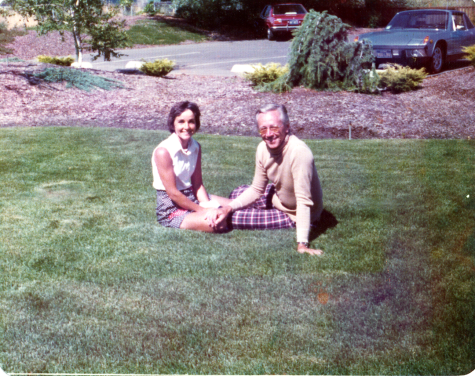
When Sparky and I married, I would go into his office, and he was drawing a comic strip, and he was so good at it that he could draw and talk to me at the same time. I saw this happening day after day and for 25 years; I took it for granted. I didn’t realize how hard it is, how every line is a decision. You have to make the square, and you have to decide how much is dialogue and how the characters are, and if you look at a comic strip, say there’s Snoopy and Charlie Brown, they all have different proportions. He had to decide how to make the panel look interesting, so they couldn’t just be exactly the same; maybe they would be bigger or maybe he would put just a side of the doghouse and Charlie Brown standing there. So every panel was a new decision to make. And I didn’t realize that, so I took it all for granted. He used to draw the last panel first, because he said, “I don’t want to have an idea, and then I get to the end and it doesn’t work.” He wanted to make sure the joke worked. He would make sure that panel worked and fill in the others. He had to think all the time, but by the time I met him, he had been drawing it for over 20 years, and he was just an expert at it.
OL: What is something simple that you would want, or would hope, the younger generation to know about “Peanuts” and Mr. Schulz?
JS: There’s a lot of life lessons in “Peanuts.” Some of those are being kind to people, taking your lumps and getting up again. There’s a lot of philosophical wisdom in Linus and his quiet, thumb-sucking way. So I would hope that they might spend enough time with the stories to learn about the humanity, the forgiveness. So you can laugh at yourself. Everybody has problems, and they can be overcome. If [younger people] don’t know anything [about “Peanuts’’], I would hope they come here and would develop a little bit of a curiosity so that they might pursue some of the stories.
OL: I saw that you took some classes at the JC; what was your experience like?
JS: I took John LeBaron’s photography class for maybe four semesters. Of course, John was a wonderful teacher, and the JC was so open, and it was small. It was a smaller community. This was in the late ‘60s, early ‘70s. I am not a wonderful photographer, but I enjoyed it. And then I took Liz Quant’s printmaking class. Liz was a first-class artist. And then I took a Japanese class because our Japanese business is big. All the classes were wonderful.
OL: In 1977, The Oak Leaf interviewed Mr. Schulz, and we learned he taught a cartooning class at the JC. How did that come to be?
JS: It was partly because I told him how inspiring it was to take Liz Quant’s art class and how many older people in the class there were. And so he said, “Maybe I could teach a cartooning class?” And he wasn’t as well known in Santa Rosa [then] as he would be now, but he said he would. So he went on the first day and told [the students] to come back to bring this and this. And they came back next week and didn’t have it. I think he was expecting them to be a little older, or maybe when he was that age, 18- and 19-year-olds were more focused on it as a career thing.
OL: At the time of the interview, he was putting up a show at the JC art gallery with original strips and illustrations, and yet he told The Oak Leaf, “I’m not sure comic strips belong in galleries.”
JS: Yeah, because he was aware that in a way, comic strips are a craft. Yes, they’re an art, but he said, “I’m a cartoonist, not an artist.” I think when he said “This isn’t art,” they thought he was being modest, but it wasn’t really being modest. It’s the truth. You’re performing a craft, you’re a craftsman. And that’s what he wanted to be, a skilled craftsman. It’s an honesty on his part, and he wanted to be admired. And he wanted his work to be admired, but as a cartoon as a craft, not hailed as an artist.
OL: What does the JC’s role in the community mean to you?
JS: When I first came to town, there were Quonset huts on the [JC] property where the married students lived. It was a community. The junior college embraced the community, and the community embraced the junior college. A lot of people in the community took classes at the JC. The whole thrust of the junior college was education for everyone, and I think maybe part of it is after the war, there were a lot of people who had been in [the] service and hadn’t finished their education, and [the JC] was there for everybody.
Every time I go to the dentist and have a new hygienist or somebody takes my blood at the lab, I say, “Did you get your training at the JC?” There are a lot of people in the community who can go to the JC, get a job and live in the community. I think it’s wonderful. And I’ll always love their theater. It’s a treasure.
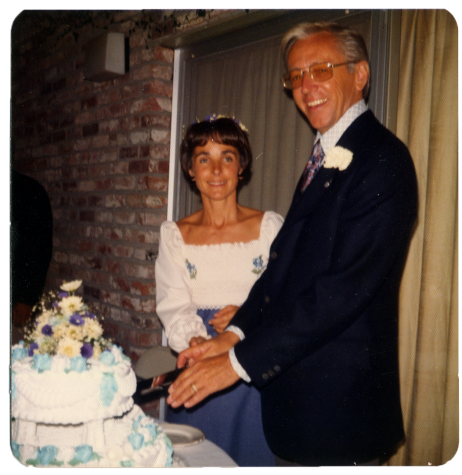
OL: What are some of your favorite parts of living here in Santa Rosa and Sonoma County as well?
JS: I personally love being close to the ocean. I’m also proud of all the open space here. I contribute to Land Paths, which I love, because they get kids out on the land who wouldn’t have otherwise. There are enough people in the community who value the open space and… they’re protecting it, they’re using it, they’re encouraging people to use it.
OL: What, if anything, have you seen change within this community? What have you seen mostly stay the same?
JS: I used to say when we first moved here in 1962 that if I walked down the street I would always see somebody I knew. And now I don’t. One of the biggest changes was when the Raiders practiced down at [The El Rancho Tropicana Hotel]; that was a fun thing. They used to come to the Fosters Freeze [on 4th Street], and its still there, that and the Superburger. It reminds me that some things stay the same, even though everything else changes.
But when the big box stores came, and that whole area was created, that just changed Santa Rosa, I’m guessing at the end of the ‘70s. That did change it a lot. I still try to go to the local stores. But of course now people order stuff and never go out at all. But there were some stores there for years and have held on and had a small enough footprint that they could hang on, with a narrow enough business. I treasure all of those local people.
OL: What is currently the most important community issue to you?
JS: In terms of community, you want to have nice things. You know, you want to have nice neighborhoods to live in, you want to have nice restaurants to go to, nice parks, nice schools. But at the same time, you don’t want it to be nice for one group of people that counts on keeping another group of people at low-paying jobs so that you can have your nice restaurant and your nice garden and all that.
I was just listening to something on the radio. It was a Black woman, I don’t know who she is, but she said that she thought the environment was the rich white people’s fight. And I realized, ‘Oh wait a minute, that’s my fight.’ So I guess you could almost say that the most important community issue is ignorance and closing your eyes to obvious issues. Closing your eyes because it’s easier or it’s painful. Everyone says young people are more in-tune, and I can only hope so because I don’t think we’ve done that great a job.
OL: You were not born in the U.S.; when did you move here?
JS: I was born in Germany. My parents were British, and they left when the war began and came to San Francisco. We lived in Mill Valley from 1942 to 1948. My mother and father divorced, and we three children moved to Southern California in San Diego County in a small agricultural town. They bought property and planted avocado trees. I married [my first husband, Peter,] and lived in San Francisco from 1957 to 1959, and moved to Hawaii for three years, then came here to Santa Rosa in 1962 [and married Charles in 1973]. So I’ve been a Californian most of my life.
OL: You were a private pilot for a while. What initially attracted you to flying?
JS: My mother and stepfather both flew. They were pilots, and they used to come up here on their cross country trips. They would come with their instructor and spend the night, so people were always talking about flying. One day Peter said, “I think I’ll go out to the airport and take a lesson today.” And I said, “Well, why don’t you wait at least until [our daughter] is in kindergarten, and I’ll do it too?” And he said, “Well, I think I want to do it today.” But I just wasn’t going to be left behind.
OL: Even though you don’t currently fly, why are you still active with The Ninety-Nines, an international organization that promotes women pilots through education, scholarships and mutual support?
JS: Because it’s partly camaraderie. There’s still several of us who are talking with a lot of young women who are flying and have careers in aviation. And they’re trying to improve their skills and we — who haven’t flown in 20 years — still get together and talk with them. We’ve been doing it on Zoom for two years now. I’m anxious to see these people in-person, because I’m impressed with what they’re doing.
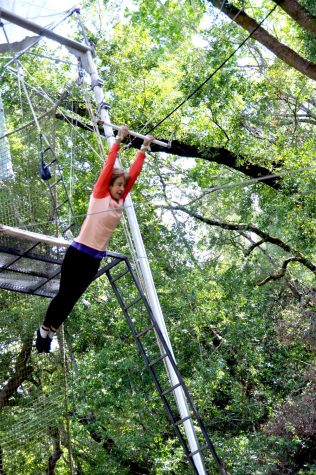
OL: You also practiced flying trapeze when you were around 60. I was curious if there was a connection between the different types of flying?
JS: No, I think only curiosity. I was at a Club Med [resort on vacation], and I went up [the trapeze platform] and tried to jump off, and I did jump off. But it was semi-terrifying. And I thought, “Well I can’t believe I can’t do that.” And my grandkids are little, and I used to take them to the park and go on the parallel bars, because I didn’t want to be not able to do something. And so then I discovered a trapeze [club] over in Sonoma. After a few weeks … I was hooked.
OL: Would you encourage people to try flying trapeze or flying airplanes?
JS: Both! You learn so much when you learn to fly. I say that you never quite look at the clouds the same way again, because you learned something about those clouds. You don’t take it for granted. I didn’t do any of them particularly well, but I you get an appreciation for what you learn.
OL: Your husband is well-known, but what legacy do you want to leave behind? What do you most want people to know about you?
JS: I’m happy that I have the museum as a legacy. That’s what I need. That’s what I’m proud of, feel good about. But I’d like people to know about [my] curiosity. And I would say persistence is another [way I’d describe myself]. I’ll persist in doing things that aren’t getting me anywhere, but I just feel as though I have to.
OL: What brings you joy each day?
JS: Simple things. When you leave, right on the corner, going down the road and seeing the spring flowers coming out. That sounds so corny, but it’s true.
When you go back to Steele Lane on the corner, there’s three rose bushes and a lot of poppies in front of them. Those rose bushes volunteered; they came up a few years ago [without anyone purposely planting them]. I didn’t prune them last winter, but I pruned them the winter before to see how they would do. And they came back, and they just look beautiful. Those beautiful poppies and the rose bushes, they’re there for everybody.
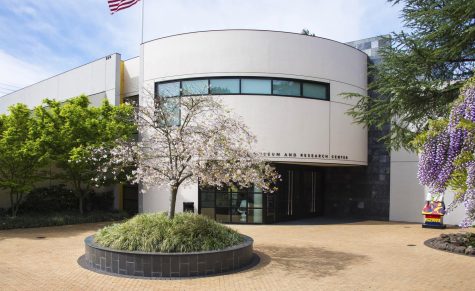 Check the Charles M. Schulz Museum and Research Center’s website for up-to-date hours. The current exhibition, “Spark Plug to Snoopy: 100 Years of Schulz” runs until Sept. 18, 2022. Admission for students with valid ID and/or youth is $5, seniors $8, all other adults $12.
Check the Charles M. Schulz Museum and Research Center’s website for up-to-date hours. The current exhibition, “Spark Plug to Snoopy: 100 Years of Schulz” runs until Sept. 18, 2022. Admission for students with valid ID and/or youth is $5, seniors $8, all other adults $12.
Photos courtesy of Charles M. Schulz Museum & Research Center. Special thanks to Stephanie King, Faith Yazel and Karen Ashton.



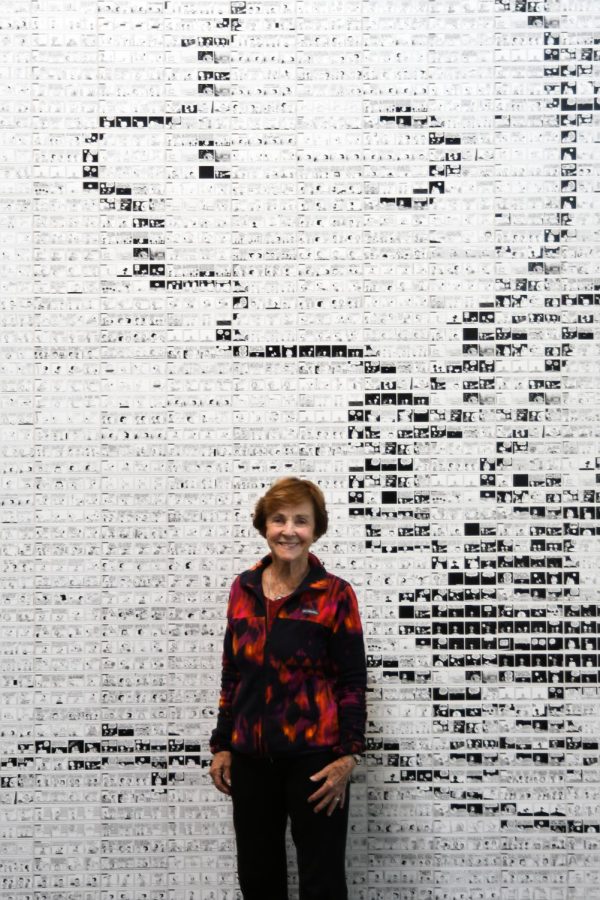
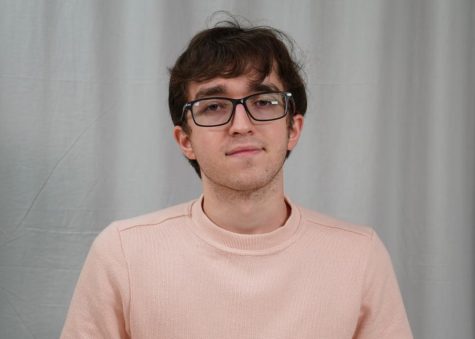
Jerry Poscovsky • May 22, 2022 at 2:07 pm
Peanuts is my all time favorite comic strips and truly impacted my life.
Is there a special book or publication celebrating the exhibit and the 100 year milestone